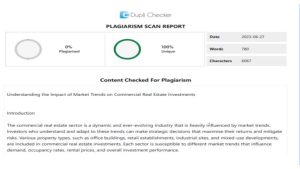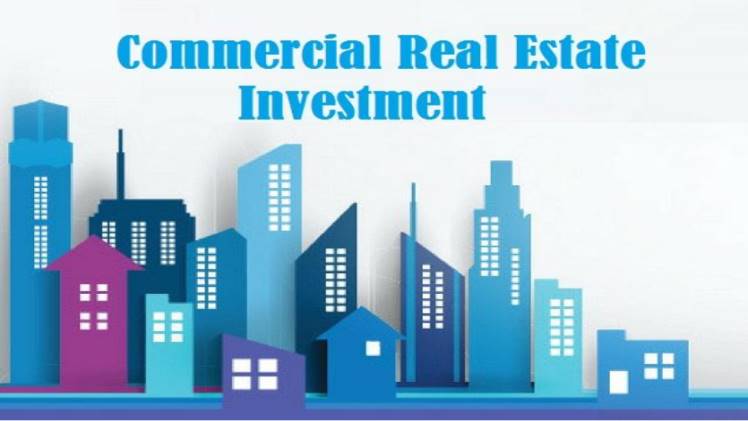The commercial real estate sector is a dynamic and ever-evolving industry that is heavily influenced by market trends. Investors who understand and adapt to these trends can make strategic decisions that maximize their returns and mitigate risks. Commercial real estate investments encompass a wide range of property types, including office buildings, retail spaces, industrial properties, and mixed-use developments. Each sector is susceptible to different market trends that influence demand, occupancy rates, rental prices, and overall investment performance.
One significant trend that has a profound impact on commercial real estate is urbanization. As more people flock to cities in search of employment, education, and lifestyle opportunities, the demand for commercial properties in urban areas increases. Retail spaces, office buildings, and mixed-use developments thrive in vibrant city centers, catering to the needs of a concentrated population. Understanding the dynamics of urbanization and its influence on commercial real estate can help investors identify prime locations and capitalize on the growth potential of urban areas.
In this blog, we will delve into the impact of market trends on commercial real estate investments and explore how various factors shape the industry landscape.
Urbanization and Shifting Demographics
Urbanization is a significant trend that affects CRE investment. As more people move to cities in search of job opportunities and better living standards, there is an increased demand for commercial properties in urban areas. Retail spaces, office buildings, and mixed-use developments thrive in bustling city centers, where they can cater to the needs of a concentrated population.
Additionally, shifting demographics play a crucial role in commercial real estate. The preferences and demands of millennials and Generation Z are reshaping the market. These younger generations value experiences, convenience, and sustainability, which has led to the rise of coworking spaces, shared office concepts, and eco-friendly buildings. Investors who adapt to these demographic shifts can capitalize on the evolving demands of tenants and consumers.
Technological Advancements and Digital Transformation
Technological advancements have revolutionized the commercial real estate industry. The digital transformation has led to changes in how businesses operate and how properties are utilized. For instance, e-commerce has disrupted the retail sector, increasing the demand for distribution centers and last-mile logistics facilities. The rise of remote work and virtual collaboration has also influenced the demand for flexible office spaces and innovative technology infrastructure.
Investors who stay at the forefront of technological trends can identify emerging opportunities. For example, investing in data centers or properties with fiber-optic connectivity can cater to the growing demand for cloud computing and digital services. Additionally, incorporating smart building technologies and energy-efficient solutions can enhance the appeal and long-term value of commercial properties.
Sustainability and Environmental Considerations
The growing awareness of environmental issues has placed sustainability at the forefront of commercial real estate investments. Sustainable buildings, green certifications, and energy-efficient practices have become increasingly important to tenants, investors, and regulators. Properties that prioritize environmental sustainability can attract tenants, command higher rents, and contribute to cost savings through reduced energy consumption.
Investors who embrace sustainability can leverage this trend to their advantage. Incorporating renewable energy sources, implementing water-efficient systems, and adopting environmentally friendly construction materials can enhance the attractiveness and marketability of commercial properties. Additionally, integrating sustainability into investment strategies aligns with the global push for carbon neutrality and positions investors as responsible stewards of the environment.
Changing Consumer Behavior and the Rise of E-commerce
The rise of e-commerce and changing consumer behavior have had a profound impact on commercial real estate investments. Traditional brick-and-mortar retail has faced significant challenges, leading to the repurposing of retail spaces into mixed-use developments, entertainment venues, or experiential retail concepts. The demand for well-located warehouses and distribution centers has surged, driven by the need for efficient supply chains and last-mile delivery capabilities.
Investors who adapt to the changing retail landscape can identify opportunities in emerging sectors such as urban logistics, last-mile distribution, and omnichannel retail. Repurposing underperforming properties or investing in strategic locations that cater to e-commerce fulfillment can generate favorable returns. Furthermore, understanding consumer preferences and trends can help investors make informed decisions regarding property types and locations.
Conclusion
CRE market insights significantly impact commercial real estate investments. By recognizing and understanding these trends, investors can make informed decisions that align with evolving tenant demands and market dynamics. Urbanization, technological advancements, sustainability, and changing consumer behavior are just a few of the factors that shape the commercial real estate landscape. Adapting to these trends presents opportunities for investors to capitalize on emerging sectors, enhance property value, and meet the demands of a rapidly evolving market. Staying attuned to market trends and embracing innovation will position investors for success in the dynamic world of commercial real estate.
Plagrism Report:

The commercial real estate market can be a highly profitable place, but it is important for potential investors to be aware of the ever-shifting market trends. Trending market conditions can have a significant impact on commercial real estate investments. It is important to understand how current market trends can affect potential investments so that investments can be made with confidence and a comprehensive strategy.
There are a few major market trends that have the potential to influence commercial real estate investments. The first is the availability of funding. During periods of economic uncertainty, lenders may be less likely to offer loans compared to times when the economic climate is stronger. This could– in turn – impact the amount of capital available for investment and the returns on the investment.
Secondly, vacancies play a large role in the commercial real estate market. Rental rates typically depend on the amount of available space and therefore if a certain area of commercial real estate has less vacancies, then it can bring premiums in rental revenue. On the other hand, if vacancies are high, landlords may need to reduce their rents to compete.
Finally, market trends can also influence appreciation and depreciation of commercial real estate. While long-term investments can provide a steady stream of revenue through rental income, investors need to be aware of the day-to-day price fluctuations in the market. This is particularly important for those looking to make speculative investments.
Commercial real estate investments can provide a significant return on capital, but it is important to be mindful of the various market trends that can have a direct impact on potential investments. Properly understanding the impact of these trends can help investors make informed decisions and create a comprehensive strategy to maximize returns.

